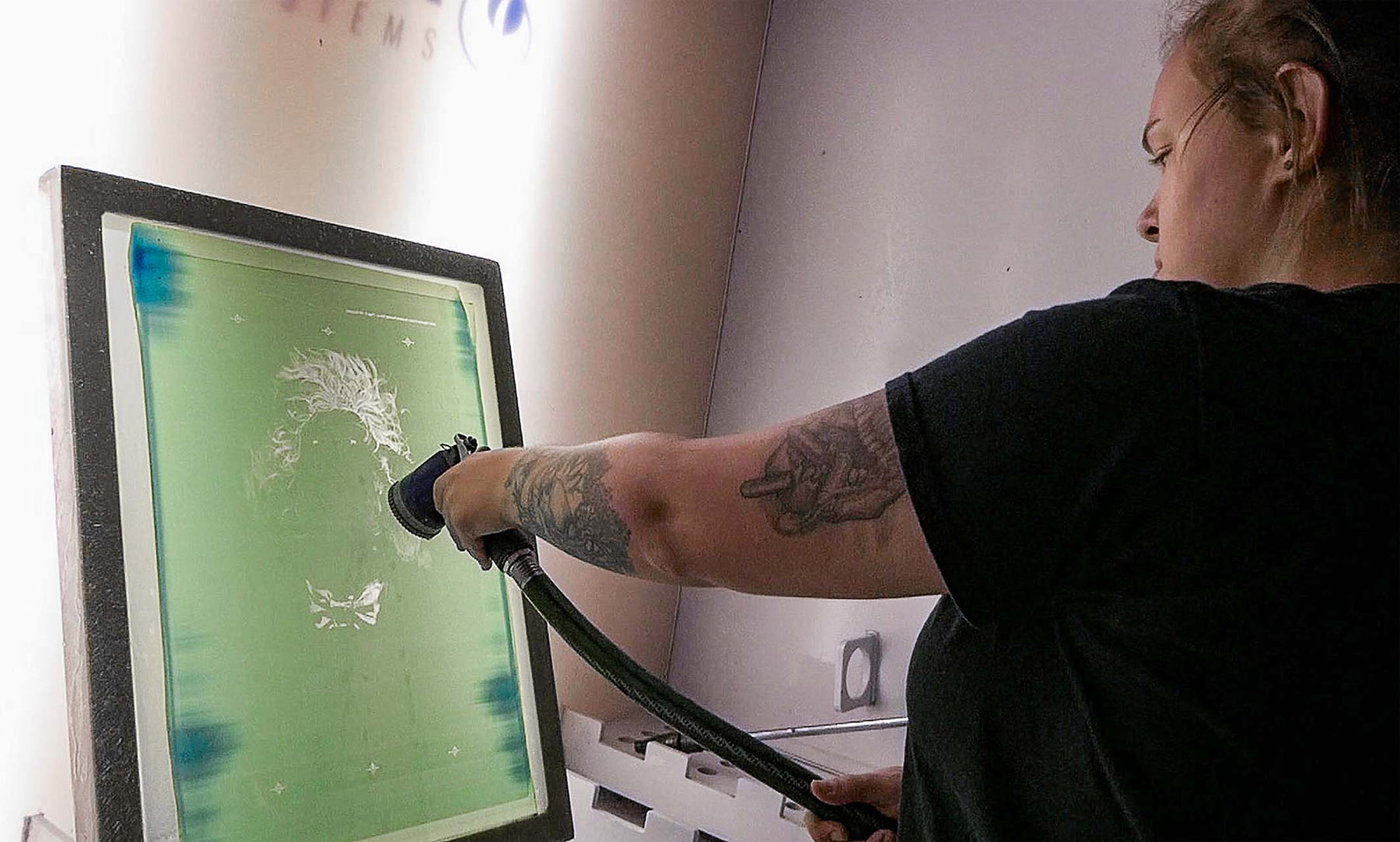Since 1997
Since 1997

Should screen printers spend the time, money and effort to improve their screen drying environment? The short answer is yes.
Critical parts of the screen printing process happen before ink ever touches your screen. The reclaiming steps that follow a successful print job play a role in setting you up for success in future work. Your print shop's screen drying environment plays a role in both steps. Your goal should be focused on creating and maintaining a clean, humidity-controlled environment with low levels of light exposure.
Keep it Dark. Keep it Clean.
To set up a proper space for drying screens, there are multiple factors screen printers must consider. Developing a screen coating and exposing process that allows printers to consistently produce high-resolution stencils is paramount to printing success.
The photosensitive properties of emulsion mean it hardens or cures, following exposure to UV light. You'll want to control light levels when working with emulsion-coated screens that have yet to fully cure. A darkroom allows printers to work in light safe conditions. Setting up a screen printing darkroom environment doesn't have to be difficult - printers only need to focus on filtering ultraviolet light in their workspace - and complete darkness isn't required. This is achieved by filtering out the rays as they pass through a semitransparent piece of film or a tinted bulb. The most common colors used in tinted bulbs or film are red and yellow, but there are many colors effective in UV filtration.
Any space can be turned into a darkroom by covering all windows and entry points with UV filtering film or blackout curtains. An important thing to remember is that most emulsions have a working time of a few minutes before hardening, so a few seconds of exposure to low levels of UV light won't ruin your coated screens.
You'll also want to ensure that this space is as free of dust and particulate matter as possible. Tiny particles of floating debris that settle on emulsion-coated screens can plague printers during screen exposure. That leads to pinholes that can be hard to spot and must be addressed before printing with tape or screen blockout products.
Keep it Warm and Dry
Lower humidity levels and higher temperatures will lead to faster screen drying times.
While it might be tempting for print shops to combine their screen drying and washout spaces, it's important to remember that blasting screens with water introduces moisture into the air which could impact the drying time of nearby screens. Dehumidifiers can help printers alleviate this issue, but it might be easier and more cost-effective over the long term to simply work in a space where you're not consistently raising humidity levels each time your wash out or reclaim a screen.

If you go with a dehumidifier, make sure that it pulls water from the air and discharges it away from your darkroom. Smaller units may units have self-contained reservoirs that retain water in the same environment you're actively working to remove it from. Printers should also consider investing in screen drying cabinets. Most units contain fans and heating elements that move warm air across screen surfaces, a factor that allows screens to dry evenly and efficiently.
The chief benefit of drying cabinets is they allow screen printers to slash screen drying time to just 30 minutes. This allows printers to quickly and efficiently move between degreasing, screen coating and their press. While it might be tempting to use small consumer-grade fans pointed at a simple screen drying rack, doing so without the aid of a filtration system can suck up dust and debris in the environment and blow it exactly where you don't want it - right at your drying screens. Taking the time to properly set up a drying space for your screens that's both light-safe and humidity-controlled can help printers consistently produce trouble-free screens.
Leave a comment